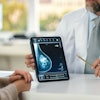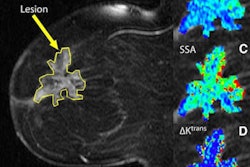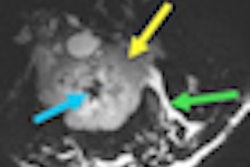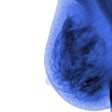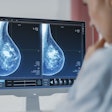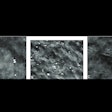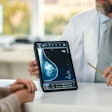Breast MRI is three times as accurate as other modalities for diagnosing breast cancer early in high-risk women, and it's so good that mammography isn't needed for annual screening of these women, according to a new study by German researchers published online this week in the Journal of Clinical Oncology.
Dr. Christiane Kuhl, from the University of Bonn in Germany, and colleagues investigated the effectiveness in terms of cancer yield and stage at diagnosis of clinical breast examination (CBE), mammography, ultrasound, and breast MRI. The researchers assessed each modality alone and in combination for screening women at elevated risk for breast cancer as part of the Evista Alendronate Comparison (EVA) trial, a multicenter randomized study (JCO, online February 22, 2010).
Between 2002 and 2007, the trial recruited 687 women with moderately increased risk of breast cancer (lifetime risk of 20% or greater). The women had 1,679 annual screening rounds with the different screening options. In a subgroup of 371 women, additional half-yearly ultrasound and CBE were performed in more than 869 screening rounds.
Twenty-seven women were diagnosed with ductal carcinoma in situ (DCIS) or invasive cancer: 11 had DCIS (41%) and 16 had invasive cancers (59%). Three (11%) of the 27 were node positive. All of the found cancers were detected during annual screening, Kuhl and colleagues wrote.
Of the imaging methods under investigation (digital mammography, ultrasound, and MRI), MRI was the most sensitive, finding 93% of breast cancers. Ultrasound found 37% and digital mammography found 33%.
MRI's superior performance suggests that in high-risk women it should be used as the annual screening exam, according to the authors.
"Our findings suggest that in these [high-risk] women, MRI is essential for early diagnosis -- and that a mammogram or an ultrasound examination does not increase the 'cancer yield' compared to what is achieved by MRI alone," they wrote. "We conclude that annual MRI is not only necessary, but in fact sufficient for screening young women at elevated risk of breast cancer. In women undergoing screening MRI, mammograms will have no benefit and should be discontinued."
Although the radiation dose associated with regular mammographic screening is safe, high-risk women, who begin annual screening earlier, at age 25 or 30, will be exposed to more cumulative lifetime radiation dose -- and these women have breast tissue that is already more vulnerable to cancer, according to the researchers.
"It is no longer justifiable to insist on annual mammographic screening for women in their 30s if they have access to screening MRI," they wrote.
By Kate Madden Yee
AuntMinnie.com staff writer
February 26, 2010
Related Reading
Nearly half of women decline breast MRI, December 30, 2009
Breast MRI best for finding mammographically occult cancers, November 9, 2009
Film-screen mammo and MRI: Different enough to complement, November 6, 2009
Breast MRI can resolve mammography findings, but use with caution, October 6, 2009
Patient age, clinical indication need to be considered in breast MRI, September 18, 2009
Copyright © 2010 AuntMinnie.com


